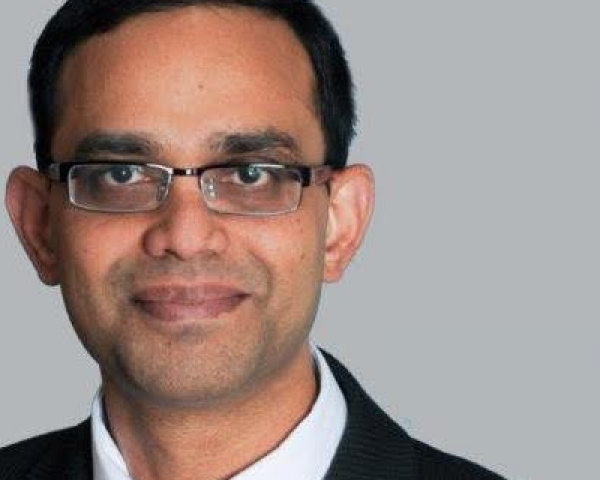- Positive Activity Jackpot
- Calm
- Breathe to Relax
- MoodKit
- Pacifica
- Life Armor
- DBT Diary Card and Skills Coach
- TalkLife
- Koko
- Lantern
- Virtual Hope Box
- BetterHelp
- My3App
- MyVAApps — Safety Plan for Veterans
- SAMHSA — Suicide Safe
Here are some of the most popular, best-researched and most innovative apps that prevent suicides and promote mental health.

Get Involved
Our authors are what set Insurance Thought Leadership apart.
|
Partner with us
We’d love to talk to you about how we can improve your marketing ROI.
|

Sally Spencer-Thomas is a clinical psychologist, inspirational international speaker and impact entrepreneur. Dr. Spencer-Thomas was moved to work in suicide prevention after her younger brother, a Denver entrepreneur, died of suicide after a battle with bipolar condition.
"Scientific wellness" enables a quantitative approach toward human health and creates highly personalized profiles of individual patients.

Get Involved
Our authors are what set Insurance Thought Leadership apart.
|
Partner with us
We’d love to talk to you about how we can improve your marketing ROI.
|

Inga Shugalo is a healthcare industry analyst at Itransition, a custom software development company. She focuses on healthcare IT, highlighting the industry challenges and technology solutions that tackle them.
As life insurance sales move from the adviser to online channels, are we forgetting the science of persuasion?

Get Involved
Our authors are what set Insurance Thought Leadership apart.
|
Partner with us
We’d love to talk to you about how we can improve your marketing ROI.
|

Matt Battersby is vice president and chief behavioral scientist at RGA. Based in London, he is responsible for the effective development and deployment of behavioral science-informed models for RGA and for its clients.
2019 will see many technology trends continue but with key modifications to increase focus on business transformation and value.

Get Involved
Our authors are what set Insurance Thought Leadership apart.
|
Partner with us
We’d love to talk to you about how we can improve your marketing ROI.
|

Vinod Kachroo is the visionary responsible for leading innovation at SE2 to develop a technology platform that’s future-proofed.
A transformation agenda can be sidetracked for any number of reasons. Here is a time-tested way to keep one on track.

Get Involved
Our authors are what set Insurance Thought Leadership apart.
|
Partner with us
We’d love to talk to you about how we can improve your marketing ROI.
|

Gautam Kumar is AVP, product management, at Haven Life, a leading insurtech, where he has led the flagship direct-to-consumer product (havenlife.com) as well as strategic initiatives.
The top threats include "vaccine hesitancy," which is based on fraudulent research and has done extraordinary damage to public health.

Get Involved
Our authors are what set Insurance Thought Leadership apart.
|
Partner with us
We’d love to talk to you about how we can improve your marketing ROI.
|

Dan Miller is president of Daniel R. Miller, MPH Consulting. He specializes in healthcare-cost containment, absence-management best practices (STD, LTD, FMLA and workers' comp), integrated disability management and workers’ compensation managed care.
While 2018 saw many legacy carriers conduct pilots on improving the customer experience, it is imperative for the rest to act now.

Get Involved
Our authors are what set Insurance Thought Leadership apart.
|
Partner with us
We’d love to talk to you about how we can improve your marketing ROI.
|

Ira Sopic is currently focused on how insurance carriers are integrating AI and advanced analytics into their existing processes to increase efficiency and revolutionize the way they work. This includes the key partnerships that the industry is creating and a clear picture of how the future will be shaped.

Over the past couple of weeks, we have used this commentary to shine a light on and begin a discourse regarding what we believe are the avoidable consequences of certain catastrophic events. As our takeoff point, we've focused on PG&E's announcement that it plans to file for bankruptcy protection following massive liabilities from California's wildfires over the past couple of years. Some have shrugged and said there really isn't much we can do because the changing climate creates such vulnerabilities. Others have suggested that we can stop, even reverse, climate change. We think we have to deal with the world as it is, while waiting (without great hope) to see whether mankind has the political will and the technological skill to remove climate-related vulnerabilities, at what would likely be great cost.
And we think we can deal with the world as it is, at least a lot better than we have been, mostly because of sensors that are becoming available. The California Public Utilities Commission has just 19 inspectors for the state's 250,000 miles of power lines and 4.2 million utility poles, but new types of sensors in the grid, augmented by a new generation of satellites and drones and managed aggressively through big data and AI, can at least help spot many potential problems and can let the state respond much faster to those that occur.
The benefits of technology are even more apparent and immediate in preventing other sorts of disasters. What about the folks in Mexico who blew themselves and a bunch of other folks up trying to tap a gas pipeline? Is technology available that can detect an attempt to compromise the pipeline? There absolutely is. Is there technology that can assess the integrity of a bridge before it collapses? Yes, there is, and the technology is getting better.
Until now, we didn’t really have any choice but to wait for catastrophic events to occur, then respond as best we could. But technology exists or is being rapidly developed to enable a complete shift in our approach from response to prediction and prevention, and, at least with respect to infrastructure, we are not moving nearly fast as we should.
We refer to the current situation as a "Pinto moment." Our bet is that the costs to lean into technology that captures the data, analyzes it and creates alerts that can head off catastrophes pale compared with the cost of recovering from an event like California's Camp Fire (as if there is any recovery for the 89 people who lost their lives and for their families).
We don’t know exactly who or what caused the Camp Fire, and we don't know just how it could have been prevented or what the cost would have been. We do know the wait-and-see cost of not doing anything.
One person responded to an earlier commentary by writing: "So I suppose you think the insurance industry is responsible" for these types of catastrophes. Well, depending on how you define "responsible," then, yes, we are saying that. Not from a legal liability perspective, but based on the notion that the insurance industry is uniquely qualified to take on the world's grand challenges. The industry should lead, and, in our view, has the responsibility to do so.
If running a business were just about management, then we wouldn't need leaders; we'd just need managers. But innovation doesn't happen without leadership. You can't manage your way to a new business model. We need leaders who will drive us from reaction to prevention.
If we don’t step up, who will? Government? Are insureds going take up the mantle? Prevention is in our wheelhouse. And the upside to taking the lead and shifting the whole approach from risk management to risk prevention, from turning the model on its side, is a lot of new revenue opportunities.
Are we as an industry and a society willing to step up and be smart about getting out in front and using technology to revamp how we approach the risks we face everyday?
Who will raise a hand?
Wayne Allen
Chief Executive Officer
Insurance Thought Leadership
Get Involved
Our authors are what set Insurance Thought Leadership apart.
|
Partner with us
We’d love to talk to you about how we can improve your marketing ROI.
|

Insurance Thought Leadership (ITL) delivers engaging, informative articles from our global network of thought leaders and decision makers. Their insights are transforming the insurance and risk management marketplace through knowledge sharing, big ideas on a wide variety of topics, and lessons learned through real-life applications of innovative technology.
We also connect our network of authors and readers in ways that help them uncover opportunities and that lead to innovation and strategic advantage.
The payment process is changing… but only to a point. The next step is the one that really matters to the insured: the claim payment.

Get Involved
Our authors are what set Insurance Thought Leadership apart.
|
Partner with us
We’d love to talk to you about how we can improve your marketing ROI.
|

Karen Furtado, a partner at SMA, is a recognized industry expert in the core systems space. Given her exceptional knowledge of policy administration, rating, billing and claims, insurers seek her unparalleled knowledge in mapping solutions to business requirements and IT needs.
Insurers can be far too cavalier about digital marketing, when they are otherwise so conservative about how they do business.

Get Involved
Our authors are what set Insurance Thought Leadership apart.
|
Partner with us
We’d love to talk to you about how we can improve your marketing ROI.
|